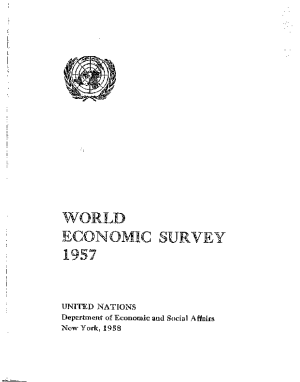World Economic Survey 1957 examines the problem of inflation, analysing its nature as well as recent governmental anti-inflationary policies, with particular emphasis on the role of monetary policies. Both demand and cost elements, as well as the significance of monetary factors are reviewed. The Survey also highlights recent events in the world economy, paying special attention to the factors underlying the recessionary trends that emerged in 1957, and provides an economic outlook for 1958.
Economic Developments in the Middle East 1956-1957
This study reviews current economic developments in the Middle East from 1956 to 1957. Details of economic activity for each country?reflecting the variations in total, sectoral and per capita incomes?are fully treated in this study. In line with the examination of inflation presented in World Economic Survey 1957, this study focuses on the economic forces which have given risen to inflationary or disinflationary pressures in the Middle East over the past few years.
Economic Developments in Africa 1956-57
This study examines the repercussions of changes in commodity markets on the economies of tropical African countries. The gradual weakening of primary commodity prices that has been noticeable since 1954 continued into the early months of 1956. While not all primary commodities showed the same downward trend in 1957, the terms of exchange between primary commodities and manufactured goods became progressively less favourable for primary producers, owing to the continuing rise of the price index of manufactures in international trade.
 Welcome to the United Nations
Welcome to the United Nations
